This Italian bread dough is by far the best I’ve made, at over 120% hydration. Thanks to using yudane, which is a paste formed by mixing flour with boiling water, I get these really big holes reminiscent of refined flour bakery bread yet enjoy the whole grain, fresh flour version at home! This recipe has even bigger holes, and better crumb than our original Freshly Milled Italian Bread Recipe and our 100% Spelt Italian Bread, which is also fresh milled.
If you want to make this Italian bread without vital wheat gluten, I totally get it. Just a reminder that if you can tolerate fresh flour – gluten is NOT the issue. The chemicals added to the grains before harvesting or while processing into refined flour is the problem, unless you’re Celiac. That said, I’m a fan of using organic vital wheat gluten to lessen any chemical exposure. It really isn’t much – maybe 2 tablespoons for the whole loaf. That’s MUCH less than most use. Notes are in the recipe for making it without but it won’t turn out the same. If you do it, please share and tag me so I can see your beautiful creations!
I used a mixture of grains today, but you can use all hard wheat if you like. Enjoy – this is my personal favorite!
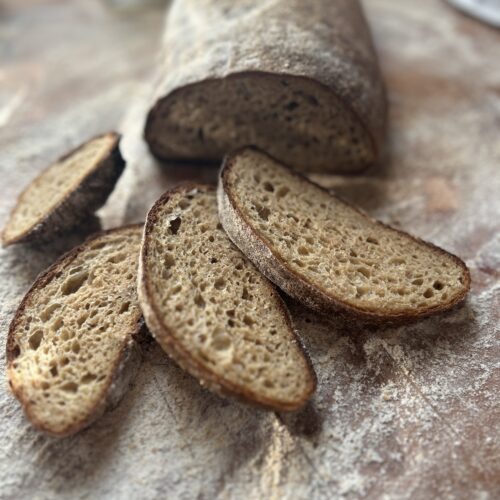
High Hydration Rustic Italian Bread with Whole Wheat Flour
Ingredients
- 420 g wheat berries, soft white 100 g soft white, 100 g hard red, 100 g hard white, 60 g durum, 60 g Einkhorn
- 30 g vital wheat gluten You can leave this out or substitute 40g sourdough starter. If so, decrease the water from 500 to 440 g. Your bread won't have the same crumb.
- 400 g water
- 50 g water, boiling
- 11 g sea salt, celtic grey
- 10 g barley malt syrup sugar, honey, or maple syrup can be used, or leave it out for a great bread without sugar
- 10 g yeast (instant) I used instant, active dry can work just prove it first with some of the water
Instructions
- Mill the flour
Prepare Yudane
- Place a small cup on your scale, adding 25 g of flour to it.

- Zero out the scale, and pour 50 g of BOILING water into the bowl.
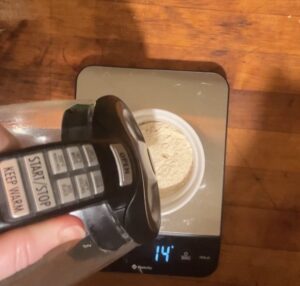
- Quickly mix into a paste, and set aside.
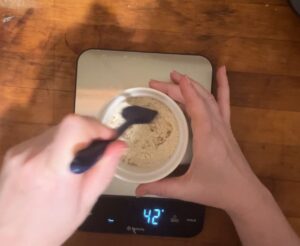
Mixing the dough
- Add water, yudane, salt, barley malt syrup to your mixing bowl using wire whisks.
- Turn mixer on low speed, and slowly pour in the flour until incorporated.
- Kick up the speed of your mixer to highest setting for about five minutes. The dough will change in consistency from a wet batter to dough that starts to grab on and stretch in the bowl. The sound will also change. Once this happens, turn it off.
- Switch to the dough hook or roller and scraper for the Ankarsrum mixer. Sprinkle in your yeast, and knead the dough by mixer or by hand for about 2 more minutes. The dough is still wet enough that you can do it on a higher speed but it's not necessary.
Fermentation (and stretch and folds)
- Place your dough into an oiled bowl with room to double in size.
- Grab dough on the the 12 o'clock side of the bowl, stretching it up, and pulling it to the other side.
- Turn the bowl by 1/4 turn, and repeat 7 more times.
- Let the 30 dough rest for 30 minutes or until doubled.
Shaping
- Preheat your oven to 450 F. If using a dutch oven, put it into the oven (the bottom only).
- If doing an open bake, shape on a floured surface how Monique does it at Lovely Bell Bakes, or transfer to a banneton basket for a fridge proofing. If baking in a dutch oven, let your dough rise in the same bowl, doing one more set of stretch and folds. I recommend letting the dough do this second rise in the FRIDGE for best results, covered.
- Open bake: Once oven has preheated, your dough should be risen and bubbly. Use a peel or parchment to carefully get it onto the baking stone and dust with flour. Score it if you like, and bake with boiling water in a pan below it, spraying the loaf generously with water before closing the oven. Work quickly.Dutch oven: carefully transfer your dough from the proofing bowl to a floured dutch oven. Top the loaf with flour and put the lid on the Dutch oven. Scoring the loaf is optional, but I had best results without scoring.
- Bake at 450 F for 30 minutes
- Remove the pan of boiling water or remove the Dutch oven lid, depending on which you are using, and lower the oven temp to 425 F.
- Bake at 425 for another 15-20 minutes until the crust is to your liking.
- Remove from the oven and Dutch oven, cooling on a wire rack fully before slicing.
- Store in a paper bag, NOT plastic bags or beeswax – they will soften your crust too much. You can also leave this one on the counter, cut side down, if it'll be eaten fast enough.
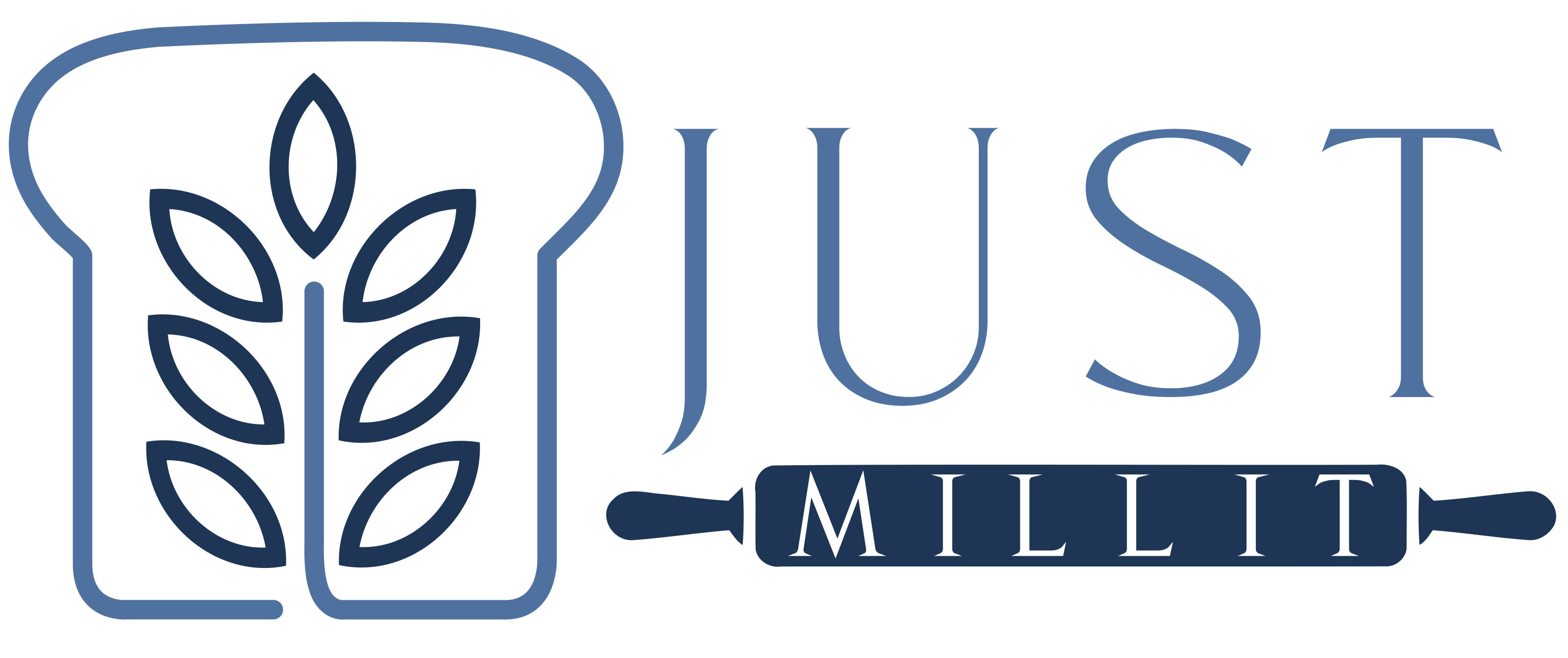
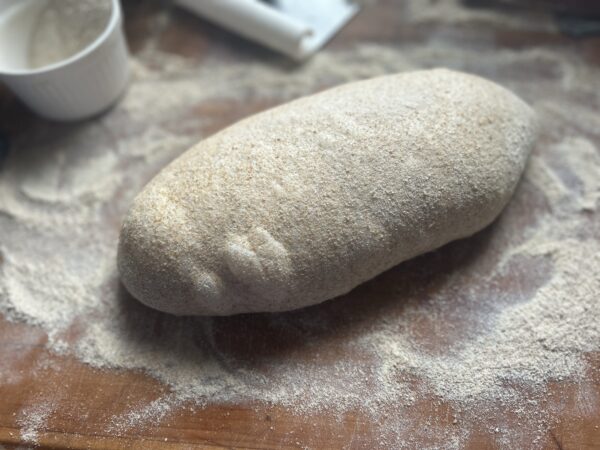
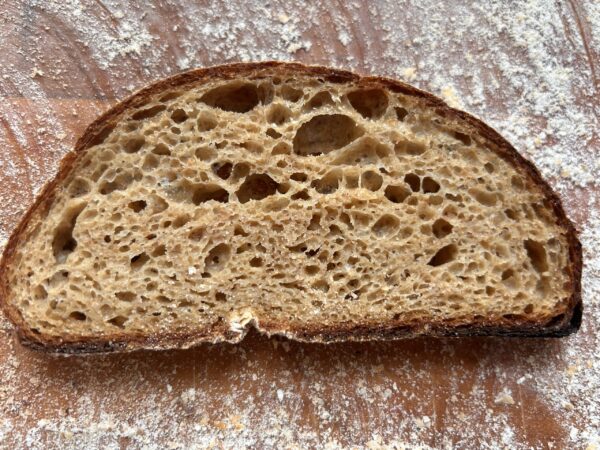
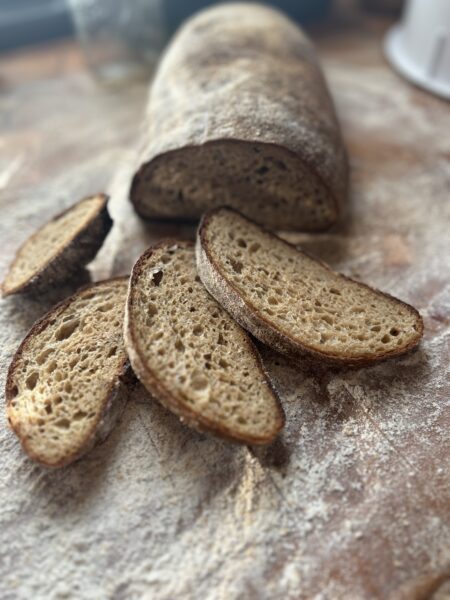

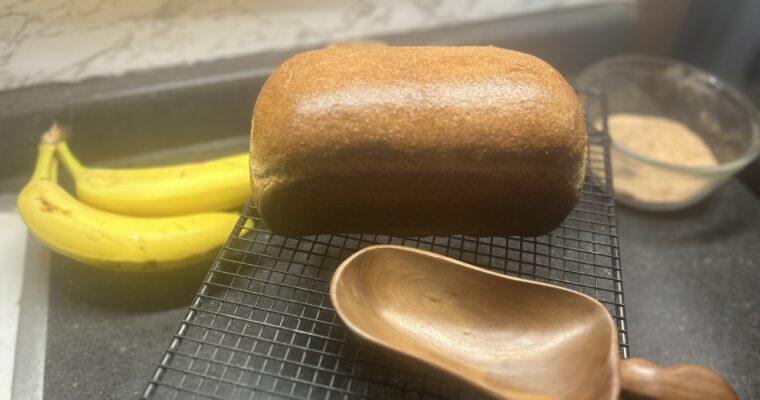
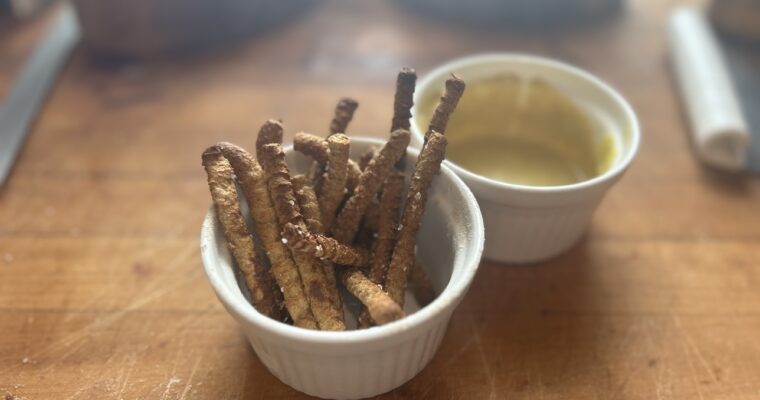
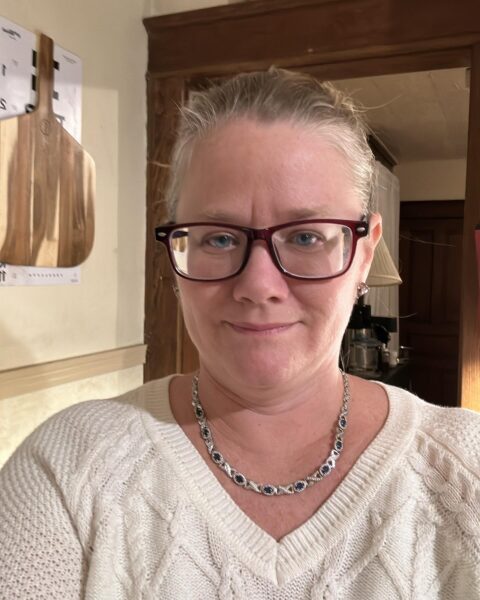
Do you use part of the 420 grams of flour for the yudane or is it additional flour?
I usually will use from the 420 grams of flour, but if I have leftover flour from another bake I’ll just use that instead. It’s just a small amount and this dough is so high in hydration (the amount of water to flour) that it won’t make a significant difference either way.
This worked exactly as written, thanks!
You’re so welcome!